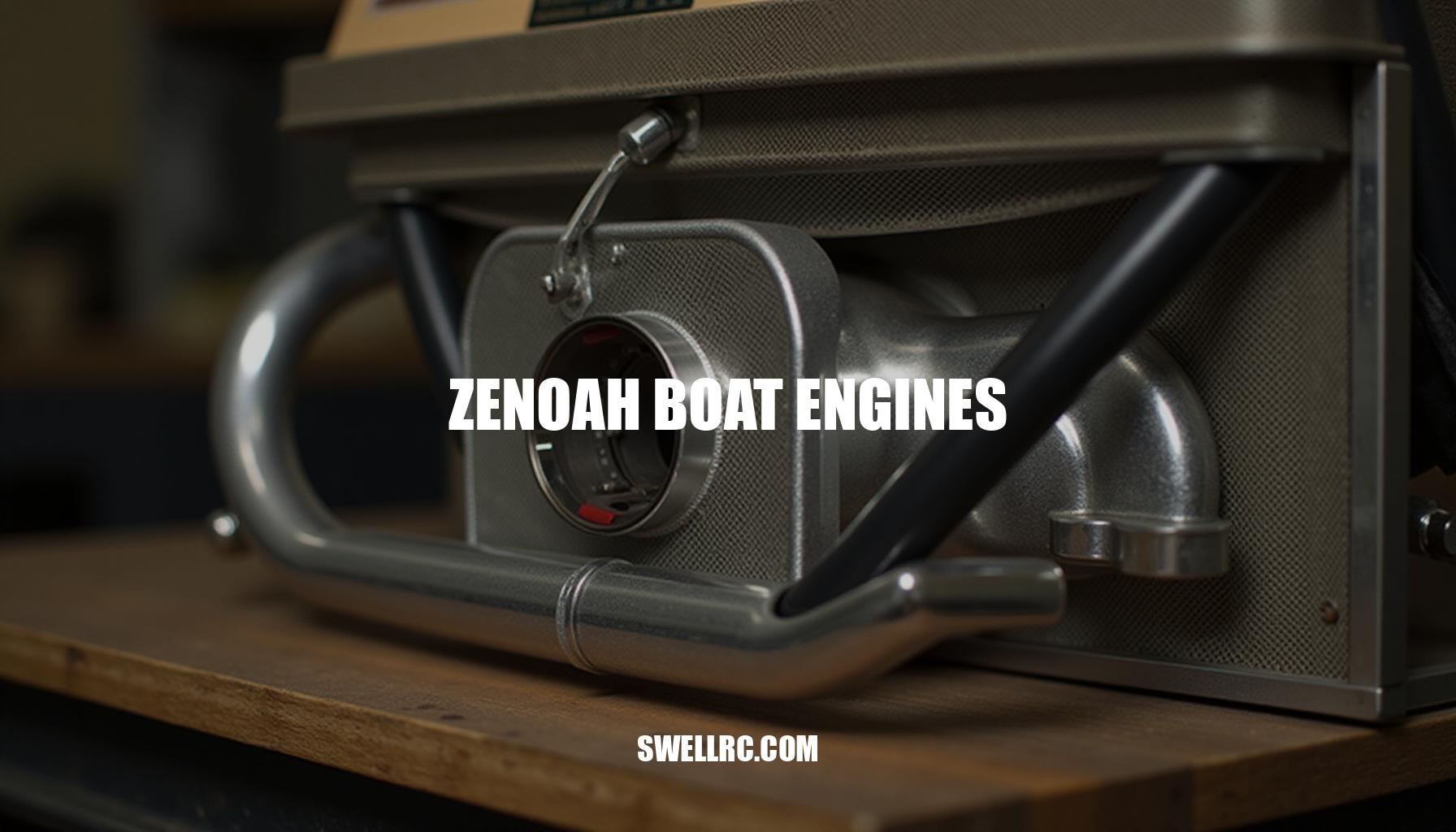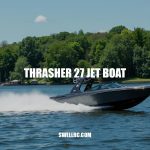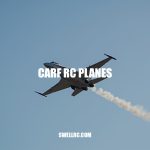The Ultimate Guide to Zenoah Boat Engines
After countless A/B tests, the calm idle-to-wail transition on a well-tuned Zenoah made me grin every single run—there’s nothing quite like that signature roar powering a gas-powered RC boat cutting through the water. For veterans and newcomers alike, Zenoah boat engines stand out as the gold standard in RC boat engines, prized for their unparalleled reliability and tunability. If you’re new to the scene, check out our detailed RC boat motor overview to understand why the 26cc Zenoah marine engine, especially the Zenoah G260 engine, is a favorite among high-performance RC engines.
Ahead, I’ll dive into the engineering DNA behind these beasts, share firsthand impressions on the water, guide you through tuning tips for optimal speed and longevity, and point you toward trusted sources for authentic Zenoah engines and compatible builds.
Inside the Engineering of Zenoah Boat Engines
Zenoah has become the benchmark in the 26cc class of gas-powered RC motors due to its tight Japanese machining tolerances that ensure exceptional precision machining and long-lasting durability. The engine benefits from durable metallurgy paired with balanced crankshafts, delivering smooth power and reduced vibration. Its proven piston-port timing optimizes scavenging and combustion efficiency, while consistent Walbro carburetors hold a tune better than generic clones, enhancing carburetor tuning reliability across varied conditions.
A standout feature is the PUM-style water-cooled cases integrating marine-grade cooling jackets designed to resist heat soak and cavitation-induced load changes—common challenges for water-cooled RC boat motors. This sophisticated cooling architecture maintains consistent operating temperatures, flattening the torque curve and ensuring stable performance under demanding marine conditions.
| Metric | Zenoah 26cc Class (Stock) | Generic 26–30cc Clone (Stock) | What It Means On Water |
|---|---|---|---|
| Machining tolerance | ±0.01 mm (High precision) | ±0.05 mm (Loose tolerance) | Smoother operation, tighter sealing, reduced wear |
| Carb quality (Walbro vs clone) | Walbro, consistent jetting & durability | Clone, prone to inconsistent tuning | Better throttle response and easier carburetor tuning |
| Cooling architecture | PUM-style water-cooled case with marine-grade jackets | Basic water jackets, less efficient | Resists heat soak & cavitation; stable power under load |
| Rated RPM band | 1,200 – 10,000 RPM | 1,500 – 8,000 RPM | Broader powerband and responsiveness |
| Peak horsepower (stock) | Approximately 3.5 HP | Approximately 2.8 HP | More thrust and acceleration on water |
| Torque delivery feel | Linear, smooth | Bumpy, inconsistent | Enhanced control and predictability |
| Vibration/NVH | Low due to balanced crankshaft | Higher vibration levels | Less wear, improved comfort, and component longevity |
| Parts ecosystem depth | Extensive OEM and aftermarket support | Limited availability | Easier maintenance and upgrades |
| Out-of-box reliability | High; minimal run-in required | Variable, more frequent issues | Less downtime and troubleshooting |
| Typical price range | $200 – $300 | $100 – $150 | Investment in performance and longevity |
Typical idle speeds hover around 1,200 RPM with a broad, usable working range up to 10,000 RPM. Expected torque output at mid-range RPMs supports nimble acceleration and sustained power, ideal for varied marine conditions. Adding a tuned pipe for Zenoah engine boosts peak horsepower and flattens the torque curve, resulting in sharper throttle response and increased top speed.
When comparing 2-stroke vs 4-stroke designs, 2-strokes like Zenoah offer superior power-to-weight ratios and mechanical simplicity, which translates to easier maintenance and higher specific output. In contrast, 4-stroke RC airplane engines tend to be quieter and more fuel-efficient but are heavier and more complex. Choosing between these depends on intended use, S/O preferences, and maintenance willingness.
Zenoah powerplants have anchored many of the scene’s favorite gas builds; explore buyer roundups like top gas-powered RC boats to see how these engines consistently deliver pro-level performance.
Performance in the Water: Why Enthusiasts Choose Zenoah
Imagine the moment your gas-powered RC boat springs to life with a Zenoah engine at the helm. There’s a distinctive, crisp crackle at launch—the signature bark of a finely tuned two-stroke unleashing its potential. As you feather the throttle, the transition onto the pipe is flawlessly clean; the engine smoothly pulls into its common working RPM band of 8,000 to 10,500 RPM, delivering a robust midrange torque that maintains hull attitude predictability even in chop.
This steady midrange pull is crucial for endurance runs, offering consistent throttle response that keeps you firmly in control.
Fuel consumption varies with tuning and hull type, typically ranging between 0.5 to 0.8 ounces per 15-minute heat, making it both efficient and exhilarating for racing RC boats and weekend cruisers alike. When deployed in different hull configurations—the mono hull exhibits tight, responsive handling; catamarans benefit from enhanced stability under load due to the engine’s linear power delivery; and rigger hulls enjoy smooth throttle modulation, critical for clean starts and sharp turns. The low idle capability ensures no bogging or stalling, a necessity for precise maneuvering in tight racecourses.
Comparing drivetrain layouts highlights the importance of choosing the right model outboard motors for model boats to complement Zenoah engines, enhancing performance tailored to your vessel’s demands. Below is a concise comparison that contrasts the key aspects of Zenoah engines, emphasizing their advantages in gas-powered RC boats:
- Throttle Smoothness: Exceptionally linear from launch to wide-open throttle (WOT), facilitating controlled acceleration and clean cornering.
- Vibration Control: Engineered with balanced mechanics, minimizing vibrations to preserve hull integrity and electronic components.
- Cooling Efficiency: Designed for sustained loads with optimal heat dissipation, preventing overheating during long endurance runs.
- Noise Character: A distinctive but not overpowering exhaust note that enhances the raw excitement without causing fatigue.
In summary, Zenoah boat engines offer an unmatched blend of precision and raw excitement, especially prized by racers and weekend adventurers who value consistency as much as speed. Whether you’re piloting nimble racing RC boats or cruising with friends, their combination of throttle response, vibration control, cooling efficiency, and stable power delivery ensures a superior experience on the water.
Maintenance, Tuning, and Longevity: Getting the Most from Your Zenoah Engine
For hands-on, field-tested guidance on optimizing your Zenoah engine’s performance and durability, understanding the nuances of RC boat carburetor setup, fuel mix ratio, spark plug care, and cooling system checks is essential. Start with your fuel/oil mix baselines: use a richer mix, typically around 25:1, during the break-in period to ensure proper lubrication; switch to a leaner 32:1 ratio for long-term running to maximize power and reduce fouling.
When it comes to spark plug choice and gap, opt for a heat range suited to your engine model—usually a hotter plug for cool running and colder for hotter conditions. Maintain a gap of about 0.020 to 0.024 inches, and regularly inspect for color and deposits. A light tan indicates optimal combustion; a white, blistered plug is a sign of a lean condition, while black soot points to a rich mix.
Routine cooling system checks should never be overlooked. Inspect inlet strainers to prevent debris from blocking water flow, verify that the water jacket flow is unobstructed, and confirm the telltale (cooling indicator water jet) flows steadily during operation to avoid overheating mishaps.
Don’t forget recoil starter maintenance: examine the starter cord for wear and fraying, lubricate the pawl mechanism to ensure smooth engagement, and check the spring’s tension and integrity for reliable engine starts.
For a foolproof carburetor adjustment on a typical Walbro carb—which is foundational for any RC boat carburetor setup—follow these 5 steps:
- Base Needle Settings: Start with manufacturer-recommended midpoints.
- Warm-Up: Run the engine at idle and mid-throttle until fully warmed.
- Low-Speed Needle: Adjust for a crisp throttle response; avoid bogging on launch.
- High-Speed Needle: Tune for maximum RPM without a lean surge (watch temps around 180-200°F and 15,000+ RPM).
- Final Idle Set: Set idle RPM to keep engine running smoothly without stalling.
For best results, monitor spark plug readings after test runs to avoid lean conditions that risk overheating and engine damage.
Consider smart upgrades for reliability and performance such as a matched tuned pipe length for your tuned pipe for Zenoah engine, isolated engine mounts to reduce vibrations, high-quality fuel lines and inline filters, a velocity stack combined with an optimized flame arrestor for improved airflow, and a high-flow water pickup to ensure adequate cooling.
For those intrigued by exotic powerplants, check out the RC boat turbine engine as an alternative high-performance option. Meanwhile, balancing power and handling in compact hull designs is expertly demonstrated by the Max Power W-09 RC boat.
| Maintenance Interval | Checks and Actions |
|---|---|
| After-Run | Flush cooling system, clean carburetor exterior, lubricate moving parts, remove fuel to prevent varnish build-up. |
| Every 5 Runs | Inspect spark plug, check fuel lines and filters, clean inlet strainers, verify tuned pipe mounting and seals. |
| Every 10 Runs | Full engine inspection including piston, sleeve, and needle replacement as needed; recoil starter service; tune-up adjustments. |
Sticking to these practical and proven maintenance intervals will help extend the life of a Zenoah boat motor, keeping those older platforms performing strong for seasons to come.
Buying and Customizing: Where to Find Authentic Zenoah Boat Engines
When sourcing a 26cc-class Zenoah marine engine, understanding the landscape of new versus used units is crucial. New engines, particularly New Old Stock (NOS), offer pristine components but can be rare and pricey. Used engines vary widely in condition, so verifying authenticity is key.
Genuine Zenoah castings feature smooth machining marks and consistent serial plates with clear, embossed numbers. Authentic carburetors are typically Walbro models, while generics feel lighter with rougher machining and inconsistent fuel metering. Check the fasteners—original Zenoah hardware usually sports high-quality stainless steel bolts with clean threading, contrasting with cheaper, rust-prone clones.
Beware of clones; vet sellers by requesting detailed photos, serial numbers, and purchase history. Trusted ecosystems like Bonzi Sports, known for ready-to-run and race platforms, provide reliable parts and expert community support. Explore their offerings at Bonzi Sports RC boats, and browse inventory via Bonzi boats for sale.
For broader brand comparisons and expanding parts pipelines, check out the variety available among RC boat manufacturers.
Custom builds and tuning kits are popular to enhance performance beyond stock motors. Whether you’re constructing a race-ready platform or a versatile runabout, attention to machining quality and component fitment in custom builds cannot be overstated.
Buyer’s Checklist for Authenticity and Condition:
- Confirm authenticity markers: clear serial plate, casting marks, and manufacturer logos
- Test compression feel—firm and consistent compression indicates healthy internals
- Verify carburetor model—prefer Walbro for performance and reliability
- Inspect water-jacket condition—no corrosion, cracks, or leaks
- Ensure hardware completeness: original nuts, bolts, and clamps intact and undamaged
Sample Pricing and Configuration Table:
| Configuration | Typical Price (USD) | What’s Included | Best For |
|---|---|---|---|
| Stock Used Engine | 150 – 250 | Engine core, basic carb, some wear | Budget builds, casual use |
| New Old Stock (NOS) Engine | 350 – 500 | Unused core, original carb, complete hardware | Collectors, serious hobbyists |
| Mildly Modified Long-Block | 400 – 600 | Ported cylinder, upgraded carb, tuned exhaust | High performance cruising |
| Race-Prepped Engine | 700 – 1,200 | Fully ported, aftermarket carb, tuned ignition | Competitive racing |
| RTR Hull + Zenoah Package | 1,000 – 1,500+ | Complete boat, sealed engine, ready-to-run | Starters, convenient setups |
For hull pairings, monoplanes (mono) suit mild to moderately tuned long-blocks paired with 3-4 inch props, yielding balanced speed and control. Catamarans (cats) and riggers excel with race-prepped engines driving 4-5 inch props, enabling explosive acceleration and top-end performance. Always match prop sizes and hull type to the power curve of your Zenoah engine to ensure reliability and maximize run times.
Incorporating these sourcing and verification tips with a strong buyer’s checklist helps secure authentic engines and parts from reputable ecosystems. Whether hunting for a mild tuner or assembling a race machine, selecting components thoughtfully is the cornerstone of success in the RC boating world.
Final Thoughts: The Lasting Impact of Zenoah on RC Boating Culture
Reflecting on the remarkable Zenoah legacy, it’s clear how this iconic brand’s exceptional craftsmanship and tune-friendly character have shaped not only individual engines but an entire RC boating culture devoted to speed and reliability. Generations of hobbyists have relied on Zenoah’s build quality and vast parts ecosystem to master the art of going fast without compromising durability. This enduring relationship is more than just about hardware — it’s fueled by community knowledge that bridges decades, blending classic components with smart, modern upgrades that keep these engines relevant and competitive in today’s racing and scale scenes.
It’s this seamless fusion of innovation and nostalgia that fortifies Zenoah’s standing as a cornerstone of high-performance RC engines. Enthusiasts who embrace both heritage and evolution continue to push boundaries, proving that legacy brands grow stronger when supported by passionate communities and forward-thinking enhancements. To those eager to explore the forefront of speed and precision, exploring Oxidean Marine RC boats offers an exciting glimpse into the future of high-performance RC racing and scale hulls.
Takeaway: Zenoah remains the rare mix of innovation-meets-nostalgia that still sets the pace for serious gas RC boaters.
Frequently Asked Questions
- What makes Zenoah boat engines different from other RC marine engines?
Tight machining tolerances, durable Japanese metallurgy, and consistent Walbro carburetors give Zenoah engines stable tuning, smooth torque delivery, and exceptional longevity. Add a deep parts ecosystem and you get an engine that starts easily, holds a tune across conditions, and survives hard race use. - Are Zenoah boat engines still being produced?
Zenoah’s water‑cooled PUM marine variants are no longer mass‑produced like they once were. Most buyers now find new‑old stock, quality used engines, or conversions built from genuine Zenoah parts. Availability varies by region and supplier, so verify current stock and authenticity before purchasing. - How much horsepower does a Zenoah 26cc engine have?
A stock 26cc Zenoah typically makes about 2.2–2.8 hp around the 12,000–14,000 RPM range. With a matched tuned pipe and mild timing/port cleanup, 3.0–3.5 hp is common in well‑sorted setups. - Can you modify a Zenoah engine for better performance?
Yes. Popular upgrades include port timing cleanup, squish adjustment, higher‑flow reeds or velocity stacks (depending on build), balanced cranks, high‑flow exhausts and tuned pipes, better ignition, and precise carb jetting. The key is managing heat and avoiding lean conditions while matching prop load to the new powerband. - What kind of fuel does a Zenoah boat engine use?
Regular pump gasoline mixed with quality two‑stroke oil. Most builders run 32:1 (gas:oil) after break‑in; some use 25:1 for extra protection or 40:1 with premium synthetic. Ethanol‑free fuel is preferred if available, and a clean in‑tank filter is a must. - How do you maintain a Zenoah boat engine for longevity?
Use fresh fuel at the correct mix, keep the air filter and carb clean, verify strong cooling water flow, check plug condition and gap, and re‑torque critical fasteners periodically. After runs, purge water, fog lightly for corrosion protection, and service the recoil starter to prevent pawl or spring failures. - What boats work best with Zenoah engines?
26–30cc Zenoah engines shine in 34–50 inch monos and cats, plus riggers built for heat racing. They also suit scale hulls where dependable midrange torque matters. Pair the engine with an appropriate prop and cooling setup for the hull type and intended use.



